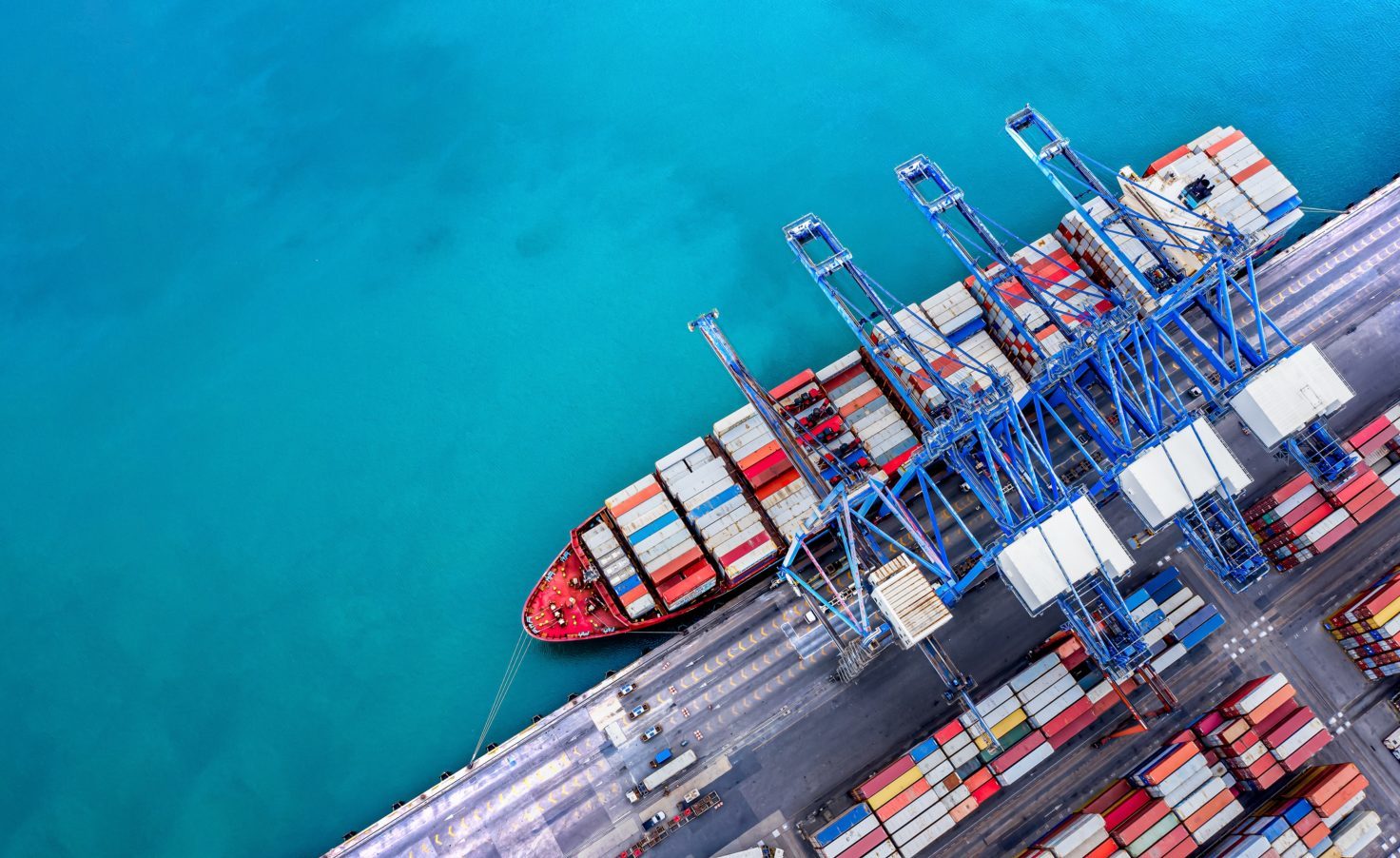
Posts Infrastructure sea ports 4366 25 October 2023
The majority of vessels arriving at the ports of Greater Odessa are intended for the export of grain cargo
In mid-August 2023, Ukraine announced temporary routes for the movement of civilian vessels from Ukrainian Black Sea seaports. Vessels blocked in Ukrainian seaports after the start of the full-scale invasion by the Russian Federation were the first to use this route. On September 16, a new temporary export corridor for inbound traffic also became operational. The viability of this corridor and, as a result, the increase in vessel traffic had a positive impact on the mood of ship owners, cargo owners and insurers. A significant disadvantage for the corridor is that so far it is mainly used for grain exports.
First results
Bulk carriers – specialized vessels for the transportation of bulk cargoes (grain, iron ore, coal) – form almost all of the inbound traffic through the temporary corridor.
According to the monitoring group of the Institute of Black Sea Strategic Studies, from September 16 to October 21, at least 42 vessels with a total deadweight of 1.7 million tons passed through the temporary corridor to the ports of Greater Odessa. During the same period, at least 23 vessels with a total deadweight of 0.85 million tons left. These data are somewhat understated, as by mid-October at least 1 million tons of grain cargoes had already been exported. For its part, the CTC publication counted 43 vessels inbound and 25 outbound as of October 21.
According to official information, currently exports through the temporary corridor amounted to almost 1.5 million tons. The actual export of grain cargoes through the temporary corridor is still only about a third of the export volume under the grain deal. In the second half of last year, an average of 3-3.9 million tons of grain was exported through the ports of Greater Odessa per month.
Among the ships passing/walking along the corridor, there are watercraft of completely different carrying capacity – from small to large Capesize ones. The five visiting vessels with a small deadweight look like this:
- Falcona (deadweight – 2.1 thousand tons).
- Maranta (5.1 thousand tons).
- Ramus (6 thousand tons).
- Briza (6.9 thousand tons).
- Bahar K (8.3 thousand tons).
Among the large bulk carriers that arrived at the ports of Greater Odessa, the following can be noted:
- Jolanda (deadweight – 180.6 thousand tons).
- Kmax Emperor (91.8 thousand tons).
- Bull (82 thousand tons).
- Beaver (81.8 thousand tons).
- Castor (78.9 thousand tons).
Due to concerns about the safety of the vessels, the nature and quantity of their cargoes are most often not disclosed. Obviously, most of the vessels came for grain cargoes.
According to GMK Center’s sources in the maritime industry, the largest of the bulk carriers that entered the ports of Greater Odessa – Jolanda – came to the port of Pivdenniy on October 14 for a cargo of iron ore. The bulk carrier left the port on October 21. Taking into account its deadweight of 180.6 thousand tons, the size of its cargo can be estimated at about 170 thousand tons.
Corridor security
At the beginning of the corridor, the most important issue was the safety of ships, which affected everything else, including the main thing – the viability of the route. Aggressors did everything to interfere with the work of Ukrainian ports. According to Oleksandr Kubrakov, Deputy Prime Minister for Ukraine’s Recovery – Minister of Community Development, Territories and Infrastructure, from the moment Russia withdrew from the grain deal until mid-October, Russia carried out 17 massive attacks on the port infrastructure in the Odessa region. As a result, more than 150 port and grain infrastructure facilities were destroyed or damaged, and the export potential of the ports (mostly on the Danube) dropped by 40 percent.
However, the efforts of the Ukrainian Navy and other security agencies were not in vain. After a series of strikes in August-October 2023, Russia relocated almost all of its Black Sea Fleet ships and subs, which could affect ship traffic, from Sevastopol to Novorossiysk. Russia’s fear of losing the Black Sea Fleet’s combat-ready watercraft was greater than its desire to block Ukrainian exports in the Black Sea.
A positive step for the work of the corridor is the launch of a mine sweeping group of the navies of Turkey, Romania and Bulgaria, which is designed to free coastal waters from sea mines.
«Our Black Sea neighbors demonstrate a surprisingly short time from the decision to establish a mine-neutral group to the beginning of practical work. The decision was taken on 12.10.2023 during another “Ramstein”, and since 16.10.2023 the ships are already at sea. We observe seven ships: one Romanian and six Bulgarian. It is very good that they are not limited to the territorial waters (12-mile zone) of Bulgaria, but also work in the adjacent zone, where the routes of bulk carriers along the Ukrainian corridor just pass», says Andriy Klymenko, head of the Monitoring Group of the Institute of Black Sea Strategic Studies on the situation in Crimea and the Black Sea region.
Also important is the ownership of the vessels. Several bulk carriers that came to the ports of Greater Odessa and have already left with cargo belonged to Chinese shipowners. In particular, Ying Hao 01, Wu Yang Glory, Xin Shun. Russia would hardly dare to attack these vessels in ports or at sea.
Corridor prospects
The temporary corridor solves some of the problems of Ukrainian exporters, primarily those from the agro-industrial complex and steel industry. Since the beginning of the war, export logistics have become many times more expensive, which brings the cost-effectiveness to the brink. external deliveries of Ukrainian products through western road and railroad crossings on the western border, as well as through ports on the Danube. Exports through the seaports of Greater Odessa allow Ukrainian exporters to reduce their logistics costs, which will have a positive impact on their financial and production performance.
Although Turkiye has not given up hope of reviving the grain deal involving the UN, Ukraine and Russia, the effective operation of the corridor increasingly (or so far) shows the inexpediency of returning to it.
«Negotiations on Moscow’s return to the grain agreements, from which it itself withdrew, no longer make sense. The grain corridor of the new format is successfully functioning without the participation of the aggressor state. Since September 2023, more than 30 ships have used the new maritime corridor paved by Ukraine. Ukraine is a responsible supplier of products, which under any circumstances is looking for ways to ensure fulfillment of its obligations under the concluded agreements,» the Center for Strategic Communications and Information Security, established under the Ministry of Culture and Information Policy, said.
In general, the government and business should work on turning the temporary corridor for maritime exports of Ukrainian products into a permanent one.
«After the first ships with grain and metal left Ukrainian ports, there was cautious optimism about the possibility of a full-fledged resumption of exports. However, Ukraine’s military and political leadership and business must make additional efforts to turn the temporary corridor into a full-fledged route. We all still need to work on making this route a route that we could count on together with agrarians,» Yuriy Ryzhenkov, CEO of Metinvest Group, said earlier.





